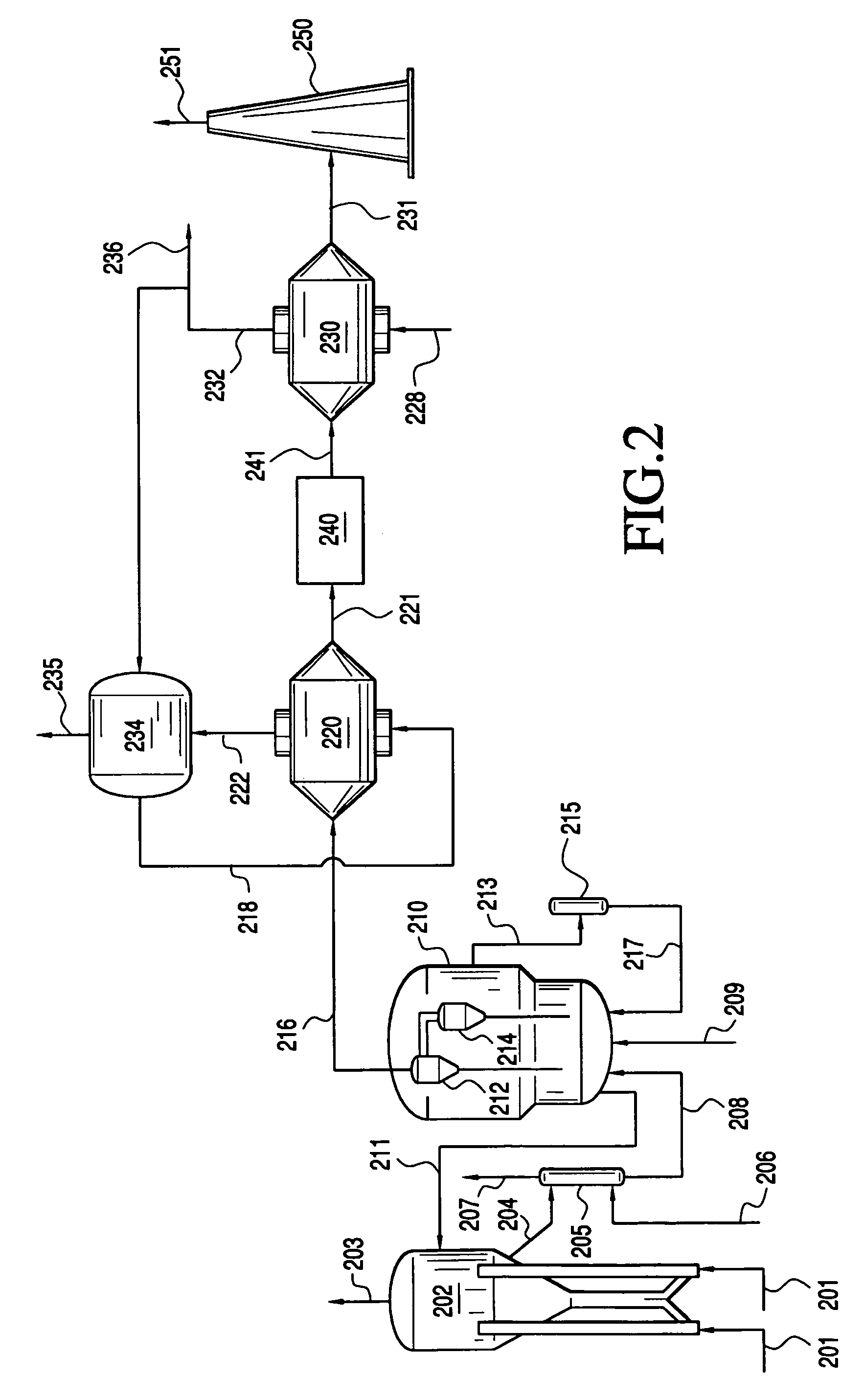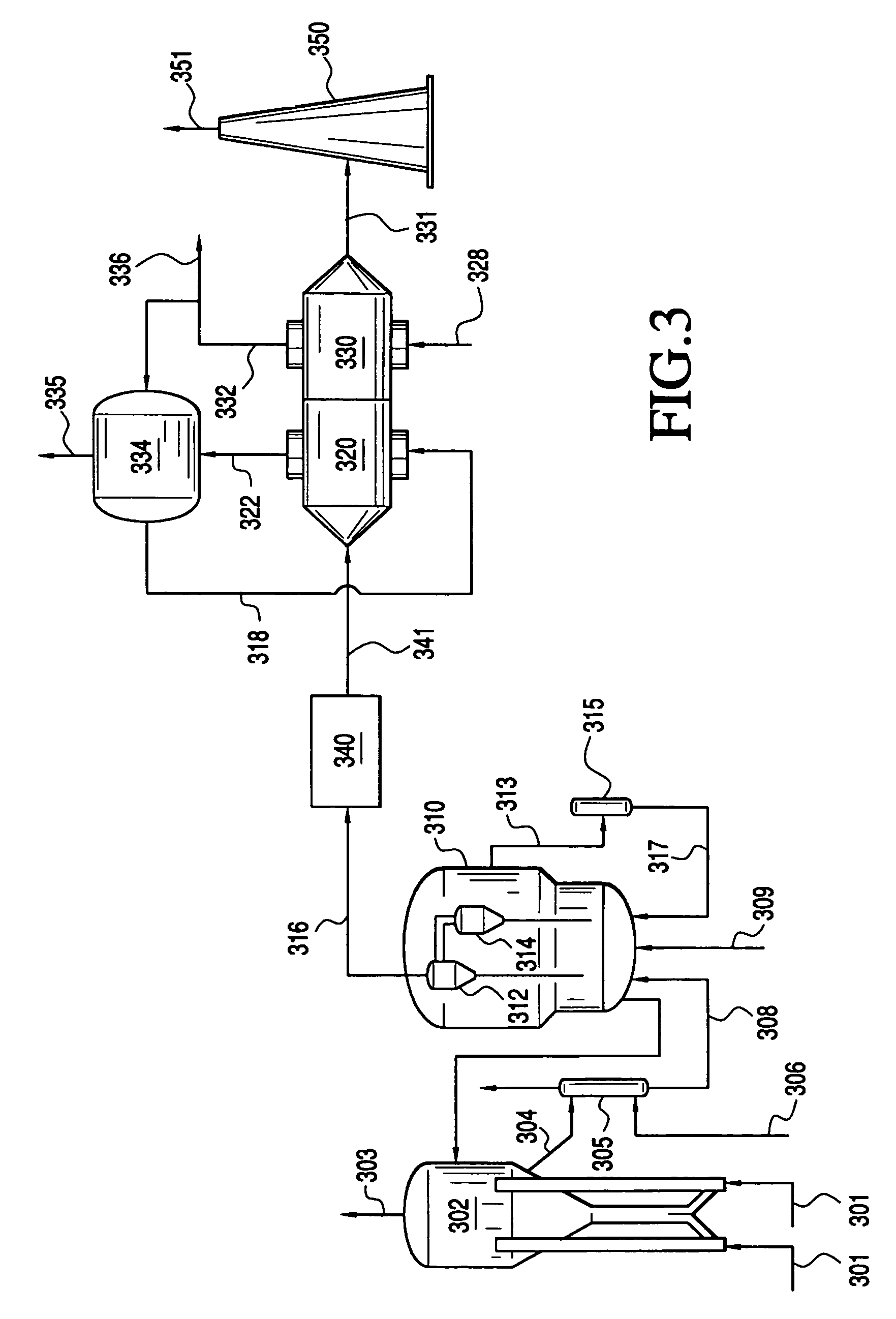Heat recovery technique for catalyst regenerator flue gas
a catalyst and flue gas technology, applied in the field of heat recovery technique of catalyst regenerator flue gas, can solve the problems of gases susceptible to further treatment, and achieve the effect of increasing steam make and efficient thermal value recovery
- Summary
- Abstract
- Description
- Claims
- Application Information
AI Technical Summary
Benefits of technology
Problems solved by technology
Method used
Image
Examples
Embodiment Construction
Molecular Sieves and Catalysts Thereof for Use in OTO Conversion
[0036]Molecular sieves suited to use for converting oxygenates to olefins (OTO) have various chemical and physical, framework, characteristics. Molecular sieves have been well classified by the Structure Commission of the International Zeolite Association according to the rules of the IUPAC Commission on Zeolite Nomenclature. A framework-type describes the connectivity, topology, of the tetrahedrally coordinated atoms constituting the framework, and making an abstraction of the specific properties for those materials. Framework-type zeolite and zeolite-type molecular sieves for which a structure has been established, are assigned a three letter code and are described in the Atlas of Zeolite Framework Types, 5th edition, Elsevier, London, England (2001), which is herein fully incorporated by reference.
[0037]Non-limiting examples of these molecular sieves are the small pore molecular sieves of a framework-type selected fr...
PUM
| Property | Measurement | Unit |
|---|---|---|
| temperature | aaaaa | aaaaa |
| temperature | aaaaa | aaaaa |
| temperature | aaaaa | aaaaa |
Abstract
Description
Claims
Application Information
 Login to View More
Login to View More - R&D
- Intellectual Property
- Life Sciences
- Materials
- Tech Scout
- Unparalleled Data Quality
- Higher Quality Content
- 60% Fewer Hallucinations
Browse by: Latest US Patents, China's latest patents, Technical Efficacy Thesaurus, Application Domain, Technology Topic, Popular Technical Reports.
© 2025 PatSnap. All rights reserved.Legal|Privacy policy|Modern Slavery Act Transparency Statement|Sitemap|About US| Contact US: help@patsnap.com



